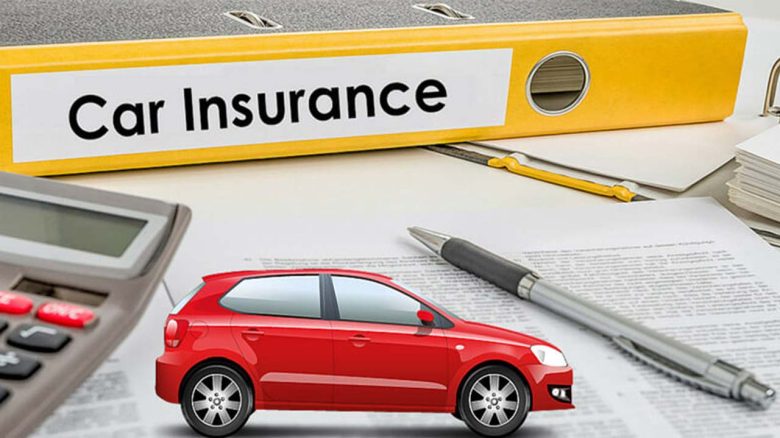The process of choosing a car insurance policy can be daunting, as it is complex and involves a lot of information, but it is definitely an essential part of driving a car. Having knowledge of car insurance policies helps not only to meet the legal obligations for owning a car, but also to protect oneself financially in case of accidents or damages.

In this guide, I will cover rudimentary car insurance details, cover the kinds of policies that exist, and options for choosing corresponding coverage. If you are a driver who is just starting out or if you simply want to relearn some of the drivers’ insurance basics, then this guide will help you.
What Is Car Insurance?
Simply put, car insurance is when you pay an insurance company a certain fee, and instead of you bearing the losses for damages, liabilities and theft that comes as a result of driving, the company insuring the car undertakes those. In other words, car insurance is defined as a service obtained for financial security concerning damages, losses, liabilities and theft as a result of purchasing a vehicle.
Like other forms of automobile insurance, car insurance is compulsory in almost all states or countries because it mitigates the possible burden that damages might have on people like hospital bills resulting from an accident or repair costs.
Types of Car Insurance Policies
Every driver faces different risks, meaning people will need a unique car insurance policy tailored to their needs. Below are the main types and their definitions:
1. Liability Insurance
Most jurisdictions require liability insurance in some form. This type aids in covering damages or injuries you may be responsible for due to an unfortunate accident. Insurance of this nature typically blends two parts:
Bodily injury liability aids an injured party in their medical expenses as well as their wages.
Property damage liability covers damages made to other person’s vehicle or property.
2. Collision Insurance
This insurance type covers damages to your own automobile arising from accidents regardless of who caused the accident. If you possess a newer or higher value car, you will find this insurance useful.
3. Comprehensive Insurance
If you drive a automobile that you wish to have covered in a wide range of events, be it a case of stealing, deliberate destruction, natural calamities, or hitting a deer, this type is perfect for you. It allows for cover which is more extensive in nature.
4. Uninsured/Underinsured Motorist Coverage
If you happen to be hit by a driver possessing little to no pay and coverage, you can avail yourself of this insurance. This guarantees that your expenses will not be personally incurred in case the at-fault driver fails to reimburse.
5. Personal Injury Protection (PIP)
PIP, or Personal Injury Protection, is often referred to as ‘No-Fault Insurance’ as it assists you with medical expenses regardless of who is responsible for the car accident. With some additional features, it can help cover lost income due to the accident as well.
Learning what regulations apply to where you live and any unique conditions that necessitate coverage will help you select the best insurance options for yourself.
Factors Affecting Car Insurance Rates
Don’t you love how your friend’s insurance premium is almost always lower than yours? There is a vast range of reasons that result in differences i0n rates between drivers, and here are the most notable ones that usually affect your premium the most:
- Drivers age: With inexperience comes higher insurance rates, so younger drivers usually pay a little more.
- Driving Record: If you have no accidents or traffic violations, you retain a clean driving record which will help you save money. On the other hand, traffic violations will increase your costs.
- Location: Rural settings are safer and less populated, allowing for lower premiums. However, urban areas with more activity and heightened chances for accidents and theft often increase costs due to the risk involved.
- Car Model: Premium and sports cars are more expensive to replace and repair, leading to higher insurance fees.
- Mileage: Increased time on the road leads to a higer odds of having an accident, ultimately increasing your insurance fees.
- Credit Score (in some locations): Drivers with improved credit scores tend to be pregnant with lower premiums.
- Type of Coverage: Comprehensive policies coupled with collision coverage are more expensive when compared to just liability insurance.
With a clear understanding of these elements, estimating expenses and identifying ways to minimize your insurance premium becomes simple.
Understanding Policy Coverage
Comprehending the details of your relevant car policy should be a priority. Policies can come across as comprehensive, but often have limitations.
What’s Covered
- Accident damages depending on the type of policy.
- Comprehensive coverage includes theft, vandalism, or natural disasters.
- Medical expenses incurred after an accident.
- Liability coverage includes bodily injuries and damage done to other people’s property.
What’s Not Covered
Any form of care, maintenance or damaging that is standard such as tire fixes or oil changes.
Using your car for business reasons (unless you have proper insurance) is not permitted. Causing damage or an accident on purpose while intoxicated is also not allowed. When preparing to file a claim, it is wise to clarify any gaps in coverage with your insurer so that there are no surprises.
Getting the Right Car Insurance
Sorting through policies can seem overwhelming, but with these guidelines, the search gets easier:
1. Evaluate Your Needs
Put into consideration your potential risks, driving patterns, and your vehicle’s worth. For example, do you intend to full cover a new car or provide basic liability coverage for older model vehicles?
2. Analyze Estimates
It is vital to get several quotes from different insurance companies. Make sure to analyze coverage seemed, premiums, and deductibles. These websites will help: The Zebra or even NerdWallet.
3. Search for Offers
Most insurers provide discounts, so ask and see if you qualify for any. There are usually savings rates provided for clean driving records, policy bundles like auto and home insurance, or even anti-theft devices.
4. Confirm Insurance Provider Reputation
Every company is different, and checking reviews, ratings, or testimonials from clients brings attention to those firms that are dependable.
5. Check the Details
Make sure you are checking the terms and conditions thoroughly. Having these steps in place can help guarantee that you do not forget important details like costs or other expenses.
6. Compare Your Expenses
Although there may be more appealing coverage may be available, it is essential to select a policy that compliments your financial standing. You need to find the sweet spot between being cheap and getting the coverage that is needed.
Common Questions for First Time Car Insurance Users
1. Is having car insurance compulsory?
Yes, in most regions and areas having car insurance is legal. Liability insurance is the most basic type of insurance and every driver should have it so they can reimburse damages or injuries they cause to a third party.
2. When should I check my policy the next time?
If there are drastic changes in your life such as relocation, purchasing a new car, or even additional drivers in your household, it is best to review your policy every year.
3. Does my car insurance work while driving a rented car?
It depends. Often, policies cover rental cars but as a general rule of thumb, it is better to confirm with your provider before declining the rental agencies insurance.
4. Will my charges increase after using a car?
Generally, after being in a collision most people’s premium increases, so yes. Some providers have accident forgiveness programs, so it depends.
5. Am I allowed to change my auto insurance provider whenever I want?
Of course! You are free to switch insurers whenever. Just make sure to look for any cancellation fees on your current policy first.
6. What does a deductible mean?
A deductible refers to the portion of your claim that you are responsible for before the coverage is applied to your insurance. In most cases, plans with high deductibles have lower premiums, and plans with lower deductibles have higher premiums.
A Final Summary on Selecting Car Insurance
Getting car insurance goes beyond just fulfilling a legal obligation; it’s a form of safeguarding yourself, your car, and your capital. With a proper understanding of the various types of insurance coverage, the many factors that affect premiums, and what your personal needs are, informed decisions can be made that will offer the protection needed while also accommodating your financial plan.
Feeling lost or having no clue where to begin should not discourage you. Car insurance agents and comparison sites are always around to help you understand what is available. With the information provided in this guide, you are set to travel confidently and most importantly, insured.




